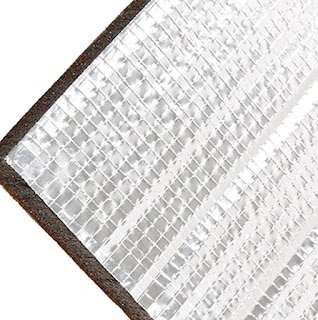Acoustic Foam
One of the super fascinating focuses while making a space expected for ideal sound, be it a committed home theatre, recording studio or vocal corner, is the means by which that sound is made due. As an accommodating piece of acoustical treatment, sound smothering Acoustic Foam is one of the essential materials people go to for helping a room's shiver resonations, standing waves, and mid and high-repeat issues. However, since foam is accessible in innumerable places and used in such incalculable ways, the request routinely comes up, "What's the differentiation between acoustical foam and the standard stuff?"
This is a significant request and one that shouldn't be pardoned. Taking everything into account, acoustical and conventional froths truly seem, by all accounts, to be indistinguishable, and they all around feel comparable to well. In any case, acoustical foam treatment is an exceptionally planned material with various unique attributes that differentiate it from the foam in your couch cushions or the sheet material on your bed. These ascribe join to make a one of a kind thing that is planned for a specific explanation. What follows is a posting of the differentiation among customary and acoustical foam, and why close enough isn't satisfactory concerning sound treatment.
 |
| Acoustic Foam Sound Proof |
Fire Retardancy - While not exactly a show brand name, the fire retardancy of acoustical foam may be its single most critical trademark due to prosperity. In studios and home theatres, acoustic treatment is oftentimes executed in open locales where possible beginning sources like cigarettes, candles and wide wiring and equipment could exist. The proper sound foam should have a palatable fire retardancy rating that meets commonly pertinent neighbourhood prosperity and building guidelines. The testing technique for foam fire retardancy is assessed by ASTM E84. That fire retardancy makes authentic acoustical foam much safer than standard foam when used in basically the same manner.
Strength - Because acoustical foam is to be used in settings where it will be in direct contact with people, it ought to be associated. Acoustical foam is made to be "non-cleaning" so it goes against breaking down for a really long time. Where the foam would never be reached, it would be a non-issue, but in places like studios where various people can consume a little room or home execution habitats with youngsters or buddies, foam can be thump, brushed, hit and scratched. Acoustical foam is expected to hold up to this kind of abuse longer than standard foam would at whatever point used much the same way.
Strength - Just like comfort foam, the steadfastness of acoustical foam is moreover a critical idea. Nevertheless, while a client's own special comfort tendency coordinates the steadfastness expected for standard froths, strength in acoustical foam accepts a section in its ability to treat sound. Low robustness foam makes an unrivalled appearance with treating high-repeat sound waves, while the firmer foam is better for treating low-repeat waves. Putting non-acoustical foam of dark strength in a room can leave voids in a soundscape while allowing other sound frequencies to go crazy. Acoustical foam incorporates a strength that discovers some sort of amicability among digestion and scattering at both high and low frequencies for the best in everyday treatment.
Cell Structure - A genuine quality of acoustical treatment that segregates it from sofa foam is the way where the foam is made. One way to deal with evaluating cell structure is an assessment of cell size, which is assessed as a Pores Per Inch rating, or PPI. This is really what it appears as the count of foam cells inside an immediate inch of the material. Customary furnishing and comfort foam has a PPI of 60-70 cells while some porous, speciality froths like dry fast foam have a PPI as low as 25 or 30. Acoustical foam regularly has a PPI of 80. More conspicuous PPI makes for an even more sonically supple thing. For a delineation of the qualification several PPI can make, a 12" x 12" x 3" tile of 80 PPI foam would have more than 127 million additional cells appear differently in relation to a 60 PPI foam with comparative angles.
Appearance - It could give off an impression of being irrelevant, but the presence of the foam contains another critical differentiation among acoustical and standard foam. Acoustical foam is made to be altogether more dependable and uniform than customary foam. Several breaths of air ascend in a resting cushion won't impact execution a tiny smidgen and will not at any point be seen, yet in a studio, those identical air pockets would ugly look at a divider diffusor. Considering the thought taken in making, you can accept that foam purchased seemingly forever not excessively far off will match as of late purchased materials. Besides, clearly, the models cut into the foam, be they wedge, twistings, pyramids or egg-crate, all influence the way where the material handles Soundproof .
 |
| Flexible Self Adhesive Sound Proofing |
On a shallow level it could seem, by all accounts, to be all foam is made the same. In fact, normal foam and acoustical foam are like apples and oranges. They're both natural items, but they taste nothing comparable. So if you truly need to treat the sound in a space, make the most ideal choice with certified acoustical foam and don't pick a spoiled one.


Comments
Post a Comment